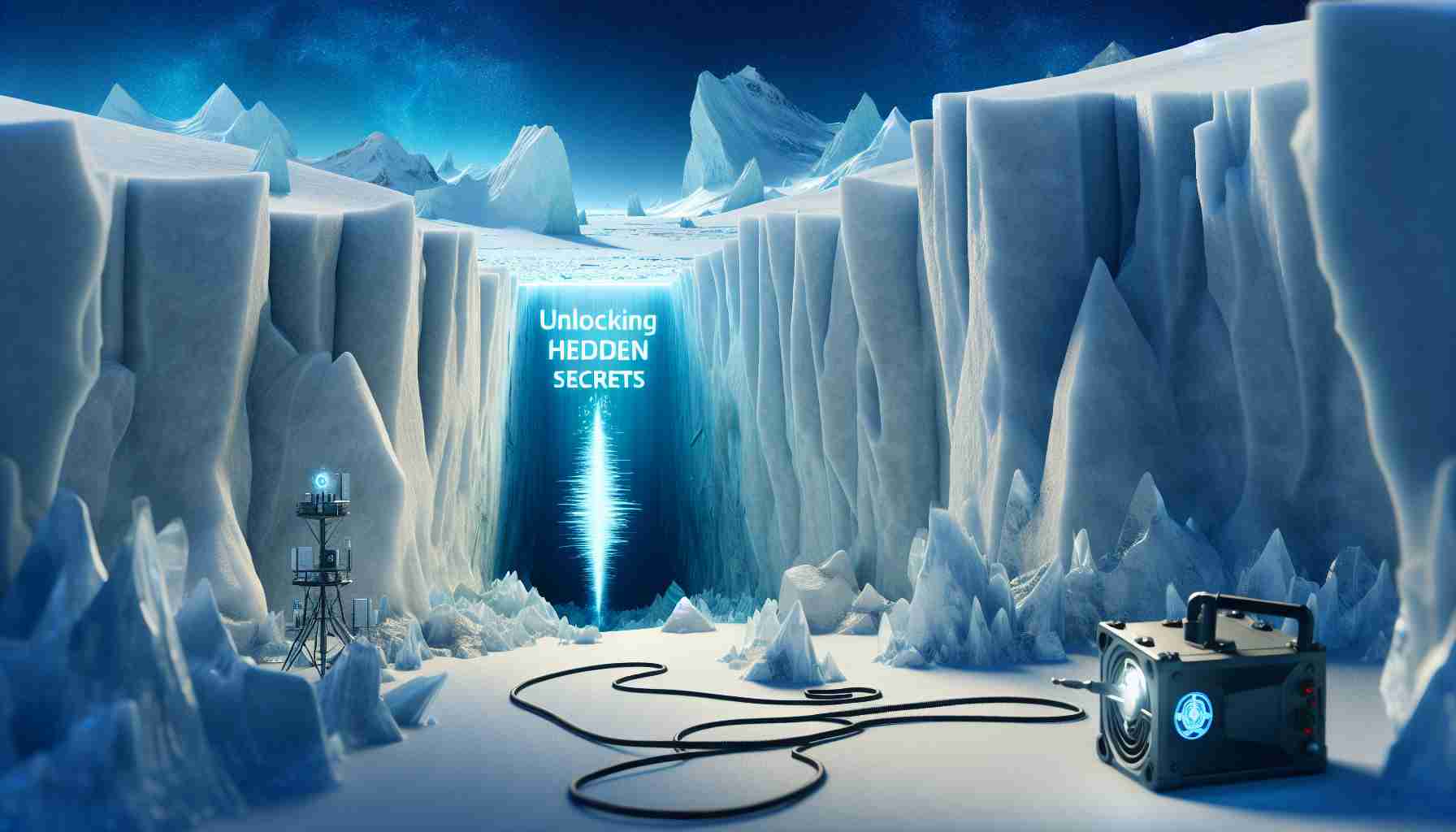- Greenland’s ice contains numerous tiny ice quakes, revealing complex dynamics that impact sea level rise.
- The quakes, triggered by ancient volcanic particles, challenge existing computer models of ice flow.
- Ice streams, similar to frozen rivers, require precise modeling for accurate projections of ice loss.
- These ice quakes follow a unique “stick-slip” motion, altering ice flow significantly.
- The discovery of volcanic impurities suggests these quakes were previously masked and not fully understood.
- New seismic data indicates this phenomenon may be widespread in ice streams globally.
- Future research will refine predictions of sea level changes and enhance our comprehension of climate systems.
In a stunning breakthrough, researchers have revealed that Greenland’s icy depths hold a surprising secret: countless tiny ice quakes that could transform our understanding of future sea level rise. These minuscule tremors, triggered by ancient volcanic particles hidden deep beneath the ice, challenge longstanding computer models predicting how ice flows impact our oceans.
Ice streams act as frozen rivers, transporting the vast Greenland and Antarctic ice sheets toward the sea. Yet, accurately modeling their dynamics has been a daunting task for scientists, who rely on satellite data that often paint an incomplete picture of ice loss. Now, an international team, led by ETH professor Andreas Fichtner, has confirmed the existence of these elusive ice quakes, unfolding a cascade of seismic activity that spreads across hundreds of meters within the ice.
What’s more, these quakes are not random; they follow a “stick-slip” motion, akin to gears in a machine, which alters the ice flow dynamics significantly. The discovery has unveiled that volcanic impurities, remnants from the eruption of Mount Mazama thousands of years ago, have created a barrier that prevents these quakes from surfacing, masking their impact until now.
Utilizing advanced techniques, researchers drilled deep into the ice and, for the first time, recorded seismic data that hints at a pattern not just unique to Greenland, but potentially pervasive in ice streams around the globe. As scientists prepare to expand their research, this groundbreaking find promises to refine our predictions of sea level change—and underscores the unpredictable nature of our planet’s climate systems.
Key takeaway: These tiny ice quakes could dramatically reshape our understanding of sea level rise, highlighting the intricate interplay between ice dynamics and ancient volcanic activity.
Unlocking the Secrets Beneath Greenland’s Ice: New Insights on Sea Level Rise
Introduction
Groundbreaking research from an international team has unveiled a fascinating connection between tiny ice quakes in Greenland and projections for future sea level rise. This discovery illustrates the intricate relationships between volcanic activity, ice dynamics, and climate change. As we delve deeper, it becomes clear that understanding these processes is critical in refining our climate models and managing future risks.
New Relevant Information
# Key Features of the Discovery
– Ice Quake Characteristics: The newly identified ice quakes exhibit a “stick-slip” motion. This means that the ice experiences periods of slow movement followed by rapid shifts, altering flow dynamics significantly.
– Impact of Volcanic Particles: The research points to volcanic remnants, particularly from the Mount Mazama eruption, creating a unique barrier within the ice that conceals the seismic activity’s impact on ice flows.
– Global Implications: While the focus is on Greenland, the findings suggest that similar mechanisms may be present in ice streams worldwide, opening avenues for extensive global research.
Use Cases
– Climate Modeling: The insights gained can refine existing models that predict sea level rise, enabling scientists to make more accurate predictions crucial for coastal planning.
– Disaster Preparedness: Enhanced understanding of ice dynamics can inform policies and strategies for communities at risk from rising sea levels.
Limitations
– Geographic Specificity: While implications are global, the specific conditions and history in Greenland may limit the direct application of findings to other regions.
– Data Collection Challenges: The technology and processes involved in drilling and data collection are complex and may hinder widespread replication.
Market Forecast
As awareness of climate change accelerates, research focused on glacial movements is likely to see increased funding. Expect a rise in interdisciplinary projects merging geology, climate science, and data analytics to predict environmental changes.
Sustainability Insights
Understanding the complex dynamics beneath ice sheets is vital for developing sustainable practices in managing climate impacts. Research in this area emphasizes the need for innovative solutions that account for hidden geological factors affecting ice stability.
Predictions
As studies expand, we can anticipate:
– Enhanced climate models incorporating these new findings, leading to revisions in future sea level rise projections.
– Increased awareness and funding for further geological assessments worldwide.
Related Questions
1. How do ice quakes affect ice flow dynamics?
Ice quakes disrupt the steady movement of ice streams through a stick-slip mechanism, leading to sudden releases of stress that can accelerate the flow of glacial ice toward the ocean.
2. What are the sources of the volcanic particles found in Greenland’s ice?
The volcanic particles primarily originate from ancient eruptions, notably from Mount Mazama, which occurred thousands of years ago and contributed to the unique sediment composition in the ice.
3. How might these findings influence climate policy?
As our understanding deepens through this research, climate policy could shift to prioritize areas most vulnerable to rapid sea level rise, focusing on resilience planning and resource allocation for affected communities.
Suggested Related Links
For further exploration of these groundbreaking findings and their implications, visit Nature or Science Magazine for the latest research articles and discussions on climate change.













